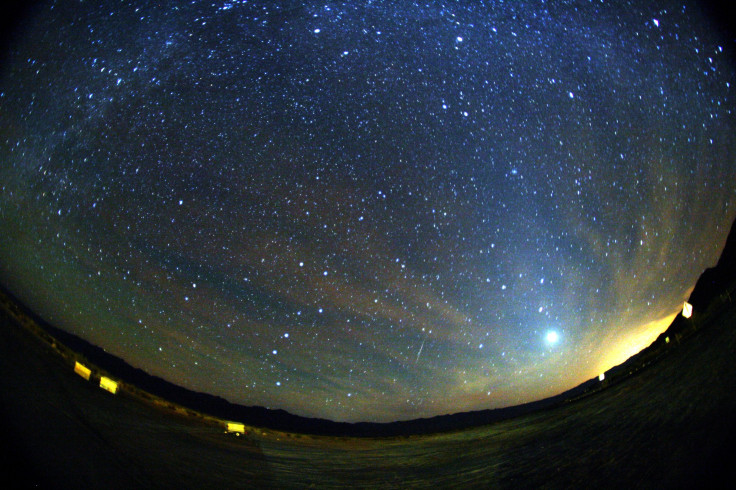Orionid Meteor Shower 2014: Catch Shooting Stars From Halley's Comet This Week

The Orionid meteor shower peaks Tuesday and stargazers can observe shooting stars from Halley's Comet throughout the week. NASA will have an Orionid meteor shower live stream Monday beginning at 10 p.m. EDT. Unlike the Perseid meteors, the Orionids are not competing with a supermoon, so they should be easier to spot.
Each year in mid-October, Earth passes through a dust and debris trail left by Halley's Comet. The debris burns up in Earth's atmosphere, leading to the Orionid meteor shower, which gets its name as it looks like the objects are originating from the constellation Orion. "Earth is passing through a stream of debris from Halley's Comet, the source of the Orionids. Bits of comet dust hitting the atmosphere should give us a couple dozen meteors per hour," Bill Cooke, from NASA's Meteoroid Environment Office, said in a statement.
NASA's viewing tips for the Orionids are quite simple: Head out in the pre-dawn hours and look up. Looking east, the constellation of Orion is easy to find. Try spotting the three stars that make up the hunter's belt, and the Orionids will appear to be coming from just above the constellation. Sirius, the Dog Star, is also nearby, as are the constellations Leo, Gemini and Taurus.
What the Orionid meteor shower lacks in number of meteoroids it makes up for in speed. "Meteoroids from Halley’s Comet strike Earth's atmosphere traveling 148,000 mph. Only the November Leonids are faster," said Cooke. Jupiter will also make an appearance, rising in the east around midnight, notes EarthSky.
The Orionid meteor shower kicks off a busy week for stargazers as Thursday brings a partial solar eclipse, visible from most of North America. The moon will pass in front of the sun, just off-center, which will produce a crescent-shaped sunset, beginning around 6 p.m. EDT.
NASA's Orionids live stream begins at 10 p.m. EDT and can be viewed below.
© Copyright IBTimes 2024. All rights reserved.





















